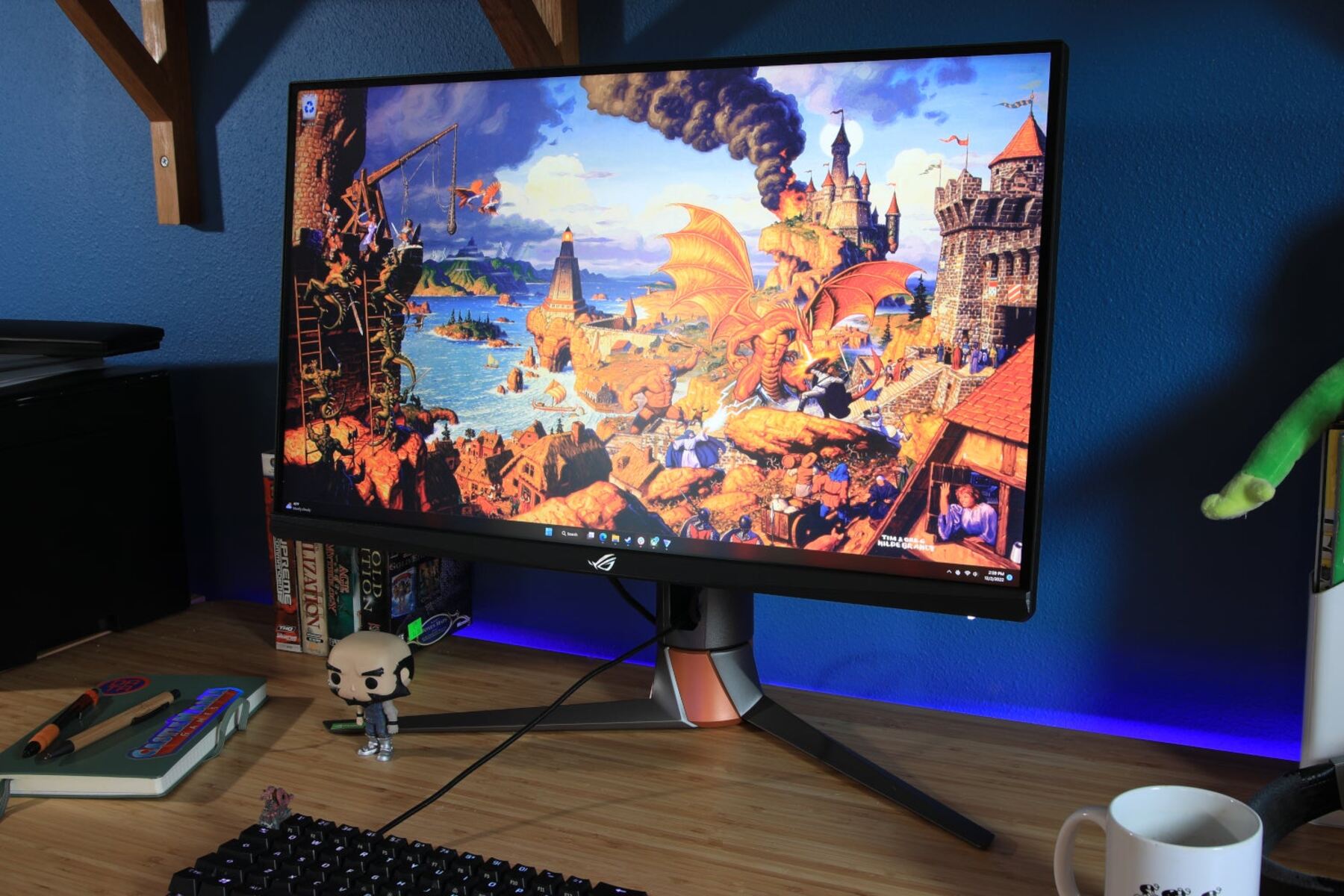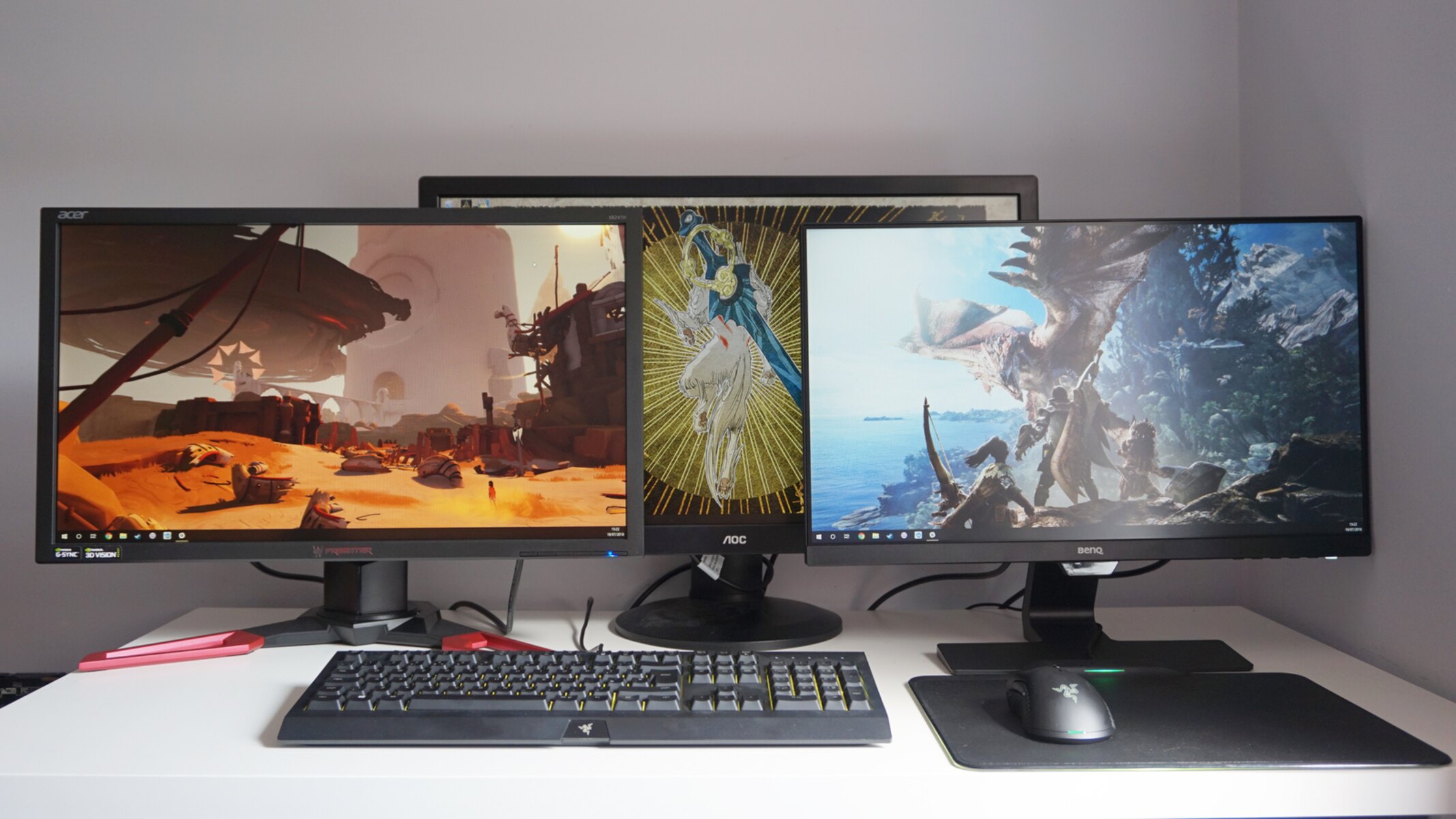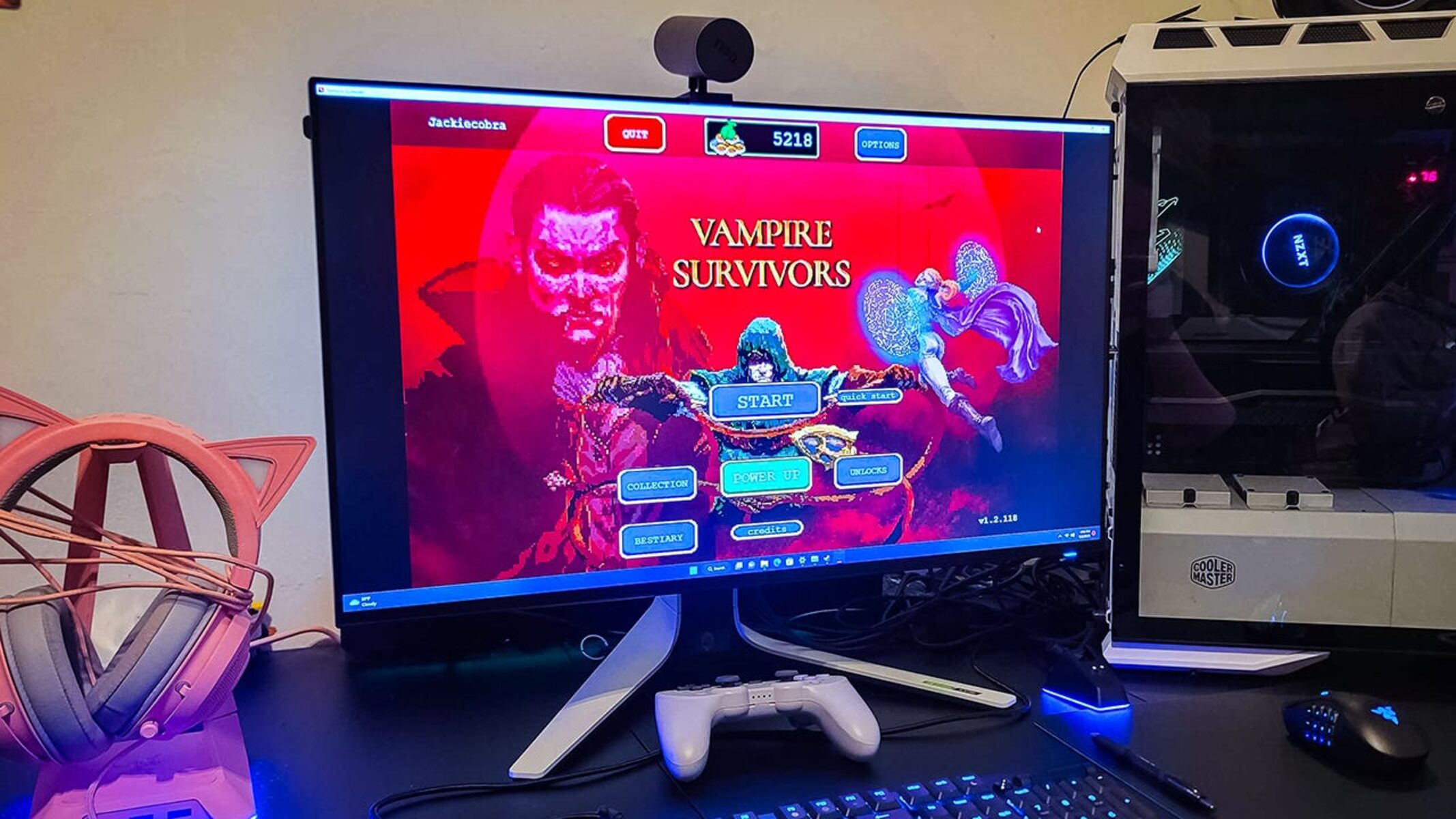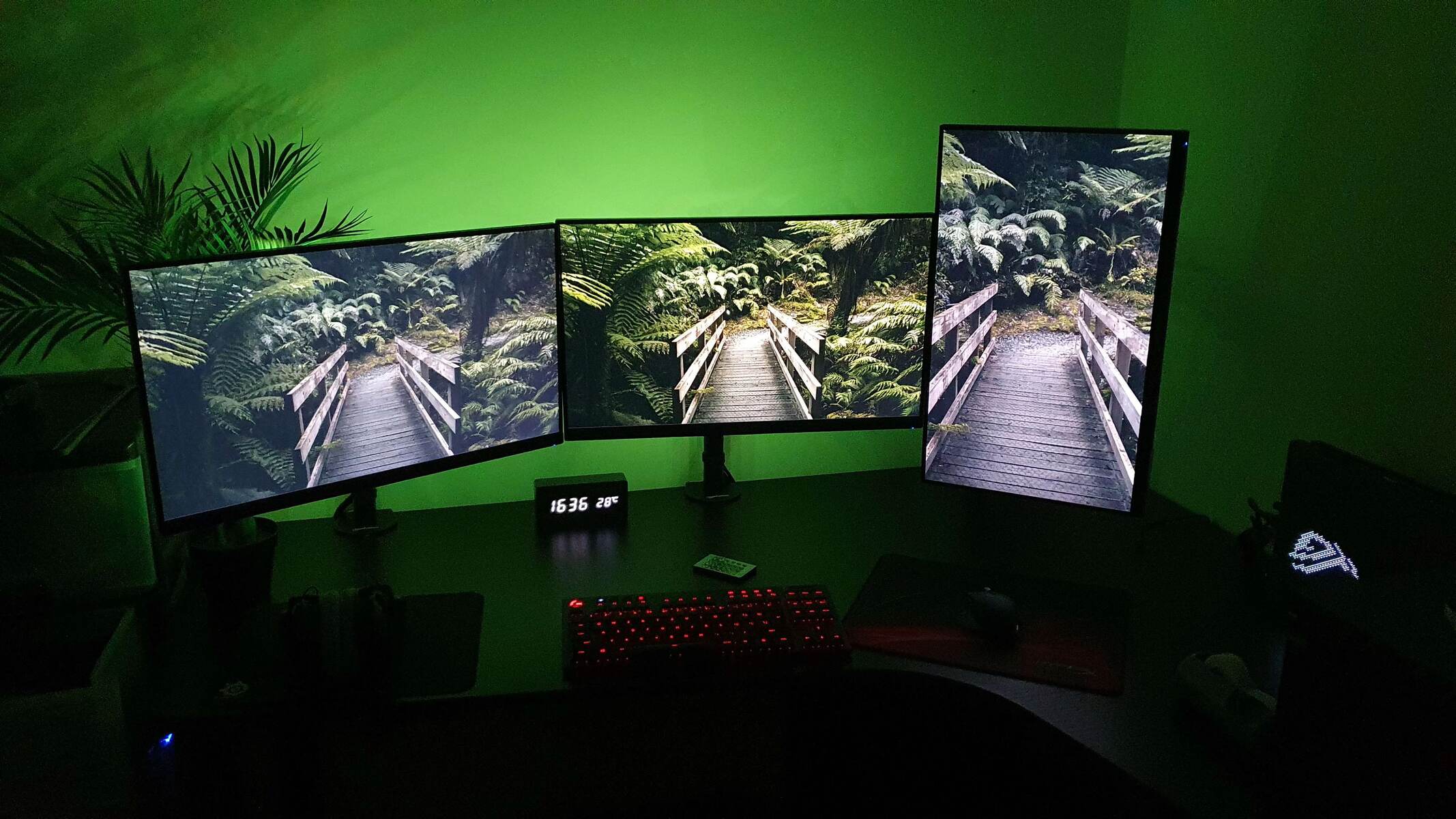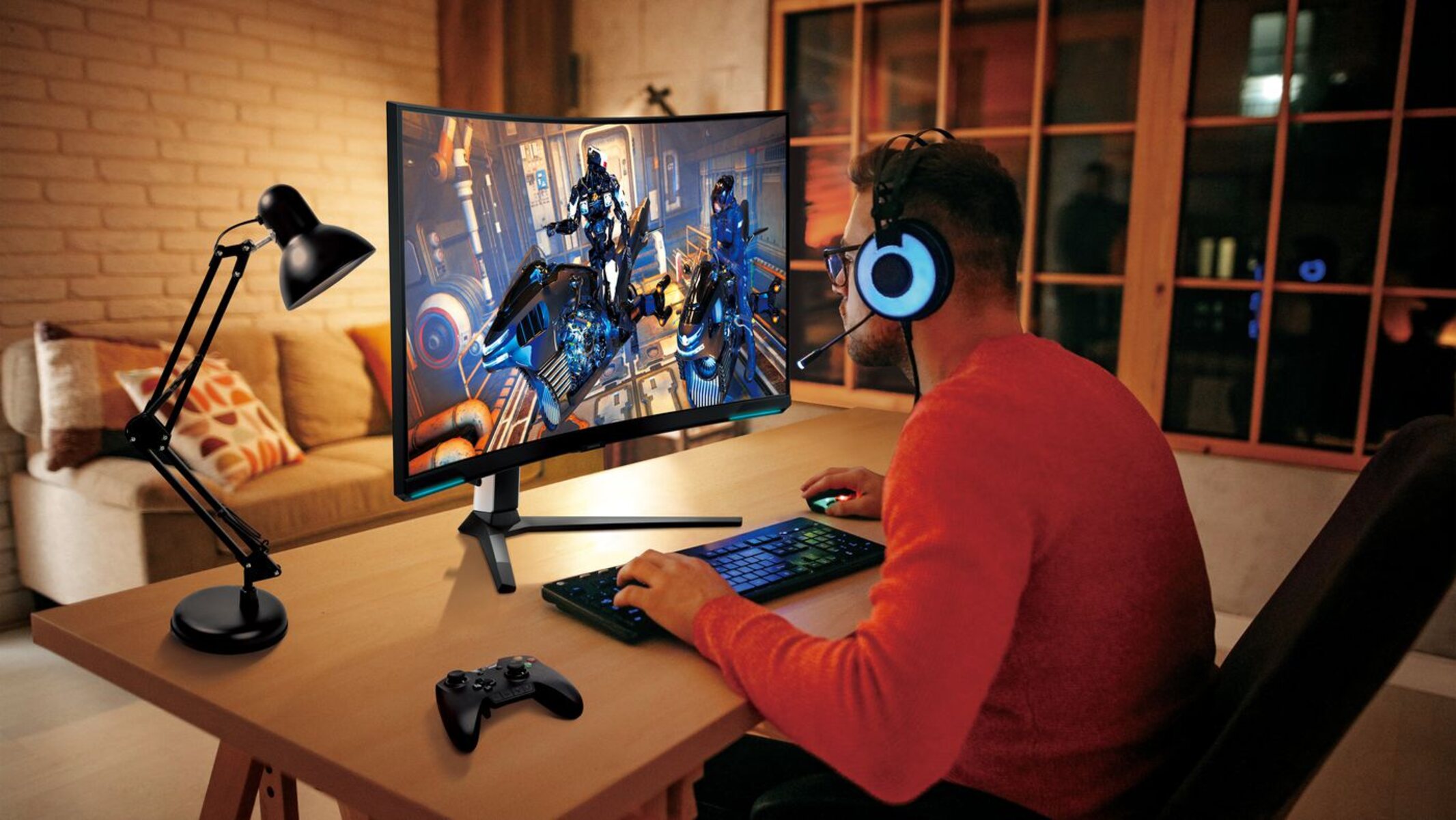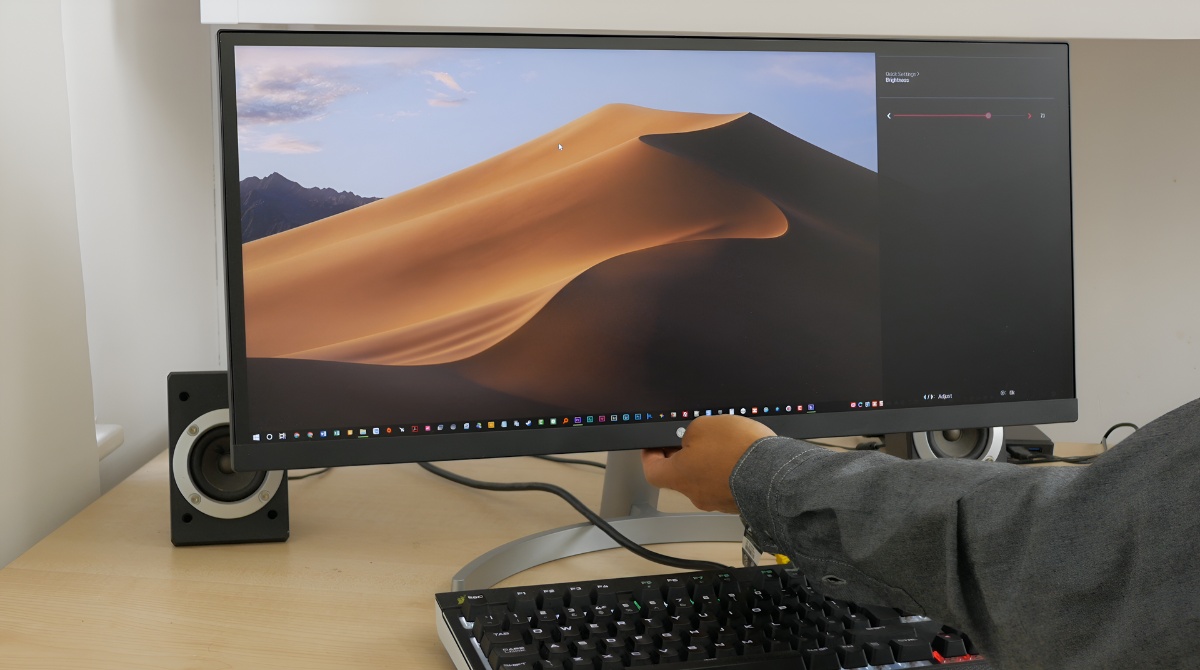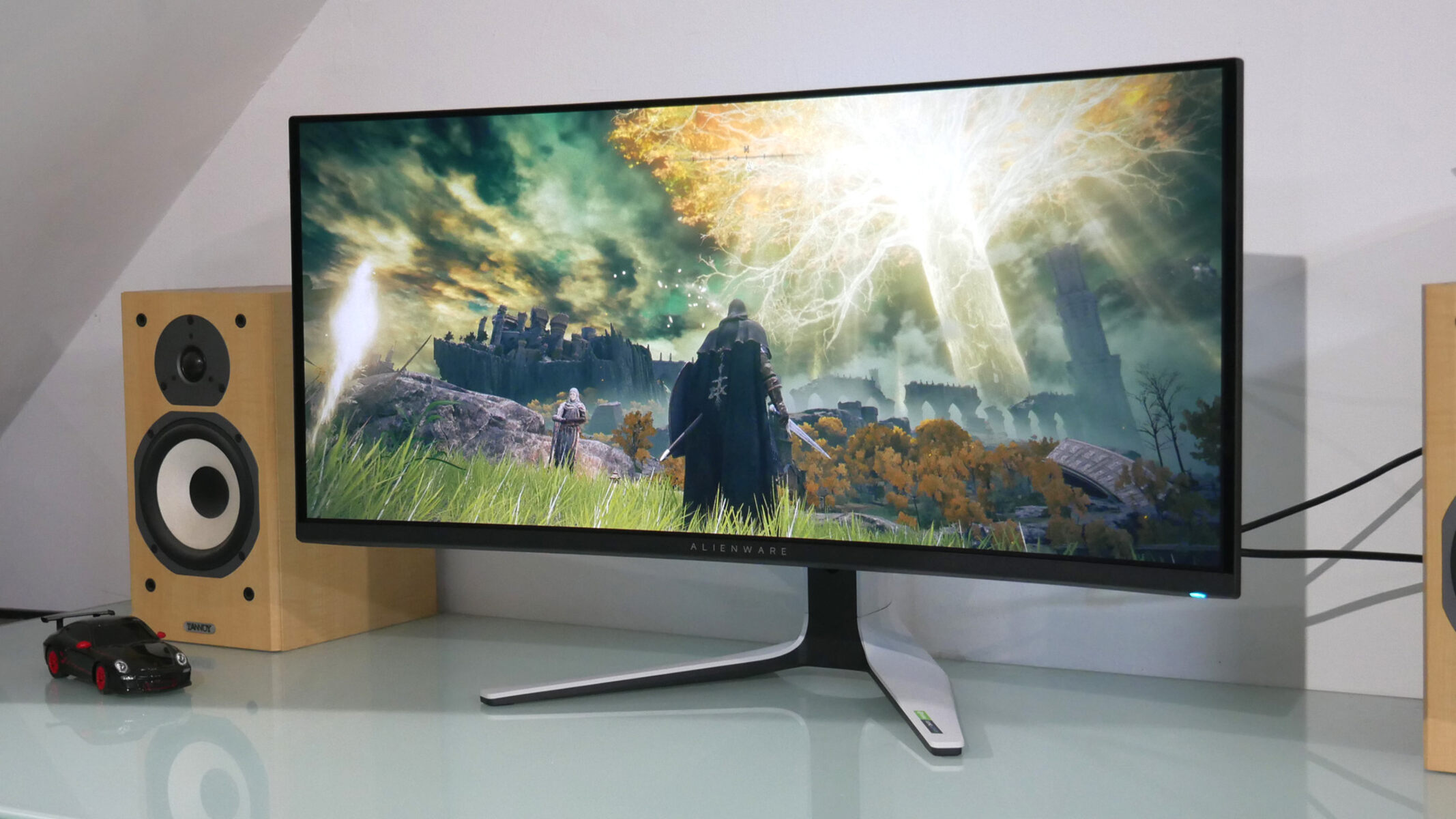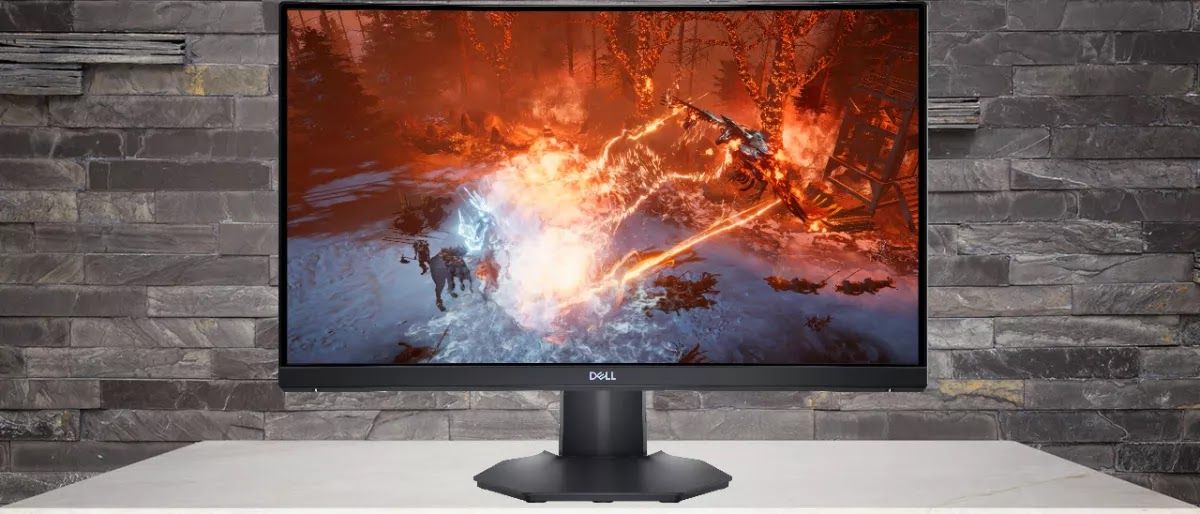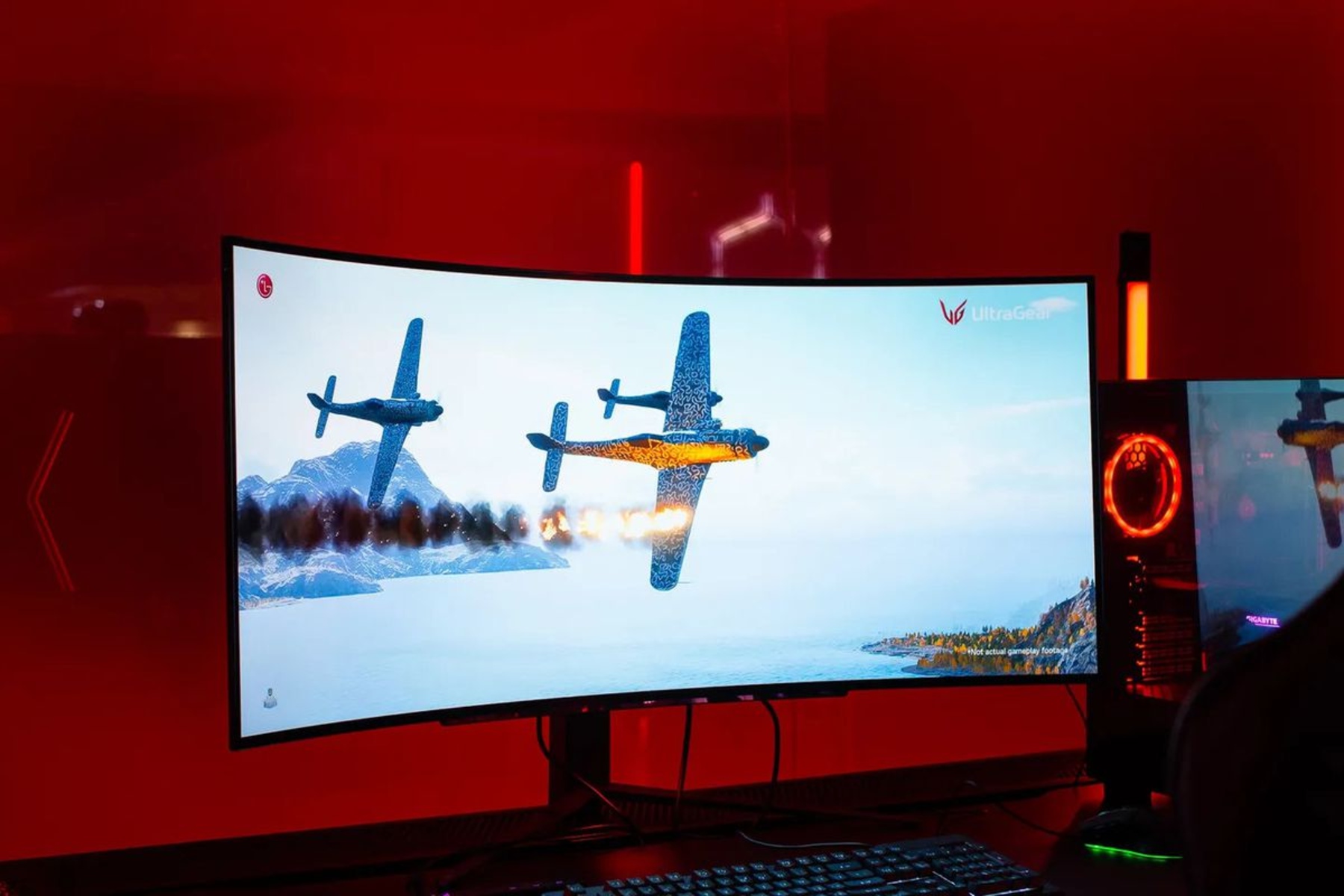Importance of Contrast Ratio in Gaming Monitors
The contrast ratio is a crucial factor to consider when choosing a gaming monitor. It determines the difference between the darkest and brightest points on the screen, and can greatly impact the visual experience while gaming. A high contrast ratio ensures that the colors and images on the screen appear vibrant and true to life, while a low contrast ratio can result in dull and washed-out visuals.
While playing games, a high contrast ratio helps to distinguish between dark and light areas, creating a more immersive and detailed gaming experience. It enhances the visibility of shadows, textures, and other intricate details, allowing gamers to spot enemies or hidden objects with ease.
Moreover, a good contrast ratio contributes to better color accuracy and depth. It ensures that colors are well-defined and accurately represented, providing a more realistic and visually pleasing gaming environment. This is particularly important for games that heavily rely on vibrant and vivid visuals, such as open-world adventures or fantasy RPGs.
Additionally, a high contrast ratio reduces eye strain and fatigue during long gaming sessions. The clear distinction between dark and light areas reduces the need for the eyes to constantly adjust, resulting in a more comfortable viewing experience. This is especially crucial for competitive gamers who spend hours in front of the screen, as it allows them to stay focused and perform at their best.
It’s worth noting that the importance of contrast ratio extends beyond gaming. For multimedia purposes, like watching movies or editing photos or videos, a high contrast ratio ensures accurate color representation and enhances visual details, providing a more immersive and enjoyable experience.
In summary, the contrast ratio plays a pivotal role in the overall visual quality and immersion of gaming monitors. A high contrast ratio improves color accuracy, enhances details, and reduces eye strain, leading to a more visually engaging and comfortable gaming experience. When selecting a gaming monitor, it is essential to consider the contrast ratio to ensure optimal visual performance and enjoyment.
What is Contrast Ratio?
The contrast ratio is a measurement that defines the difference in brightness between the darkest and brightest areas of a display. It determines the level of distinction between light and dark elements on the screen. In technical terms, it is defined as the ratio of the luminance, or intensity of light, emitted by the brightest white pixels to the luminance emitted by the darkest black pixels.
The contrast ratio is typically expressed as a number:1, such as 1000:1 or 5000:1. The first number represents the brightness of the brightest white pixel, while the second number represents the brightness of the darkest black pixel. For example, a contrast ratio of 1000:1 means that the brightest white pixel is 1000 times brighter than the darkest black pixel.
Contrast ratio measurements are essential because they directly impact the visual performance and quality of a display. A higher contrast ratio indicates a more significant difference between the darkest blacks and the brightest whites, resulting in a more visually appealing and vibrant image. On the other hand, a lower contrast ratio can lead to a loss of detail in dark or light areas, making the image appear washed out or lacking depth.
It is important to note that contrast ratio can be measured in various ways, such as static contrast ratio and dynamic contrast ratio. Static contrast ratio measures the difference between the brightest white and darkest black pixels on the screen at a given moment. Dynamic contrast ratio, on the other hand, adjusts the backlight of the display dynamically, resulting in a more dynamic and adaptive contrast ratio depending on the content being displayed.
While a high contrast ratio is generally desirable for a more immersive gaming or viewing experience, it is crucial to consider other factors as well, such as color accuracy, response time, and screen technology. These elements work together to provide a well-rounded and visually pleasing display.
In summary, the contrast ratio is a measurement that quantifies the difference in brightness between the darkest blacks and brightest whites on a display. It significantly influences the visual performance and quality of a display, impacting its ability to render vibrant colors, display details in dark or light areas, and provide an immersive visual experience.
How Does Contrast Ratio Impact Gaming?
The contrast ratio has a significant impact on the gaming experience, as it directly affects the visibility, immersion, and overall visual quality while playing games. Here are some ways in which contrast ratio influences gaming:
Enhanced Visibility: A high contrast ratio allows for better differentiation between dark and light areas on the screen. In games with dimly lit environments or shadowy corners, a higher contrast ratio helps to reveal subtle details and textures that may be essential for gameplay. This enhanced visibility gives gamers a competitive advantage by allowing them to spot enemies, hidden paths, or important objects more easily.
Depth and Realism: The contrast ratio contributes to the overall depth and realism of the gaming experience. With a higher contrast ratio, colors appear more vibrant, and images on the screen seem to pop. This increased visual dynamic range enhances the overall visual aesthetics of the game, making it more immersive and realistic.
Detail and Texture: A good contrast ratio ensures that fine details and textures in games are accurately displayed. Whether it’s the intricate patterns on a character’s clothing or the texture of the landscape, a higher contrast ratio brings out the subtle nuances, making the visuals more engaging and lifelike. This attention to detail can greatly enhance the gaming experience, especially in visually rich and detailed games.
Immersive Atmosphere: Games often aim to create immersive worlds and atmospheres. The contrast ratio plays a crucial role in achieving this goal. By accurately representing dark and light areas, the contrast ratio helps to set the mood and atmosphere of the game. Whether it’s a haunting and eerie night scene or a bright and sunny day, a high contrast ratio ensures that the intended ambiance is faithfully portrayed, enhancing the player’s immersion in the game world.
Reduced Eye Strain: Gaming sessions can span for hours, and staring at a screen for an extended period can strain the eyes. A higher contrast ratio helps to alleviate eye strain by providing clear differentiation between dark and light areas, reducing the need for constant eye readjustment. This makes gaming more comfortable, especially during long gaming sessions or competitive gameplay that requires extended focus.
In summary, the contrast ratio greatly impacts the gaming experience by enhancing visibility, depth, detail, and immersion. It contributes to the overall visual quality of games, making the experience more engaging, realistic, and enjoyable for gamers.
Understanding Contrast Ratio Measurements
When it comes to contrast ratio measurements, it’s essential to understand how they are calculated and what they signify. This knowledge can help you make informed decisions when selecting a gaming monitor. Here’s a breakdown of the various contrast ratio measurements:
Static Contrast Ratio: Static contrast ratio is the most common type of contrast ratio measurement. It represents the difference in luminance between the brightest white pixel and the darkest black pixel of a display at a specific moment. For example, a monitor with a static contrast ratio of 1000:1 means that the brightest white pixel is 1000 times brighter than the darkest black pixel at any given time.
Dynamic Contrast Ratio: Dynamic contrast ratio measures the difference in luminance between the brightest whites and darkest blacks of a display in real-time. Unlike static contrast ratio, dynamic contrast ratio is not limited to a fixed value. It adjusts the backlight of the monitor dynamically, depending on the content being displayed. This allows for more dynamic and adaptive contrast ratios, with higher ratios achieved when displaying darker content and lower ratios for brighter content.
Full Array Local Dimming (FALD): FALD is a technology used in some high-end gaming monitors to enhance contrast ratio. It divides the backlight of the display into multiple zones, allowing for individual control of each zone’s brightness. This precise control enables deeper blacks, brighter whites, and a more significant contrast ratio overall, resulting in improved image quality and better representation of dark and light areas in games.
High Dynamic Range (HDR): High Dynamic Range is a feature found in some gaming monitors that expands the contrast ratio beyond what is achievable with traditional displays. HDR allows for a broader range of color and brightness, resulting in more vibrant and lifelike visuals. Gaming monitors with HDR support can display a wider range of details in both dark and bright areas, providing a more immersive and visually stunning gaming experience.
It’s important to note that manufacturers may sometimes use different methods to measure contrast ratio, leading to varying specifications. This can make it challenging to compare contrast ratios across different brands or models. Therefore, it is advisable to consider other factors such as color accuracy, panel technology, and personal preferences when selecting a gaming monitor.
In summary, understanding contrast ratio measurements is vital in choosing a gaming monitor that meets your visual requirements. Static contrast ratio measures the difference between the brightest white and darkest black pixels, while dynamic contrast ratio adjusts the backlight dynamically. Technologies like Full Array Local Dimming and High Dynamic Range can further enhance the contrast ratio, providing deeper blacks, brighter whites, and a more immersive gaming experience.
Ideal Contrast Ratio for Gaming Monitors
When it comes to the ideal contrast ratio for gaming monitors, there is no one-size-fits-all answer. The optimal contrast ratio depends on various factors, including personal preference, the type of games you play, and the monitor’s intended use. However, there are some general guidelines to consider:
Higher Contrast Ratios: In most cases, a higher contrast ratio is desirable for gaming monitors. A high contrast ratio enhances the visual experience by providing more vibrant colors, better differentiation between dark and light areas, and improved detail representation. A contrast ratio of 1000:1 or higher is considered to be good for gaming, as it allows for excellent visibility, depth, and realism.
HDR Capabilities: Gaming monitors with High Dynamic Range (HDR) capabilities offer an enhanced contrast ratio. HDR expands the contrast ratio beyond what is achievable with traditional displays, resulting in more vibrant colors, deeper blacks, and brighter whites. Monitors with HDR support provide a more immersive and visually stunning gaming experience, especially for games that are optimized for HDR content.
Consider the Game Genre: The ideal contrast ratio can also vary depending on the type of games you play. For example, if you primarily play dark and atmospheric games, such as horror or stealth games, a higher contrast ratio is beneficial to enhance the visibility of shadows and subtle details. On the other hand, if you play brightly colored or cartoonish games, a balanced contrast ratio that accurately represents vibrant colors may be more suitable.
Panel Technology: The type of panel technology used in the gaming monitor can also affect the ideal contrast ratio. Different panel technologies, such as Twisted Nematic (TN), In-Plane Switching (IPS), or Vertical Alignment (VA), have their own strengths and weaknesses when it comes to contrast ratio and color accuracy. It’s important to research and choose a panel technology that aligns with your gaming preferences and needs.
Ultimately, the ideal contrast ratio for a gaming monitor is subjective and depends on personal preferences and specific gaming requirements. What matters most is finding a balance between an adequate contrast ratio that enhances the visuals without compromising other important factors such as color accuracy, response time, and overall gaming performance.
In summary, while there is no definitive ideal contrast ratio for gaming monitors, a higher contrast ratio is generally preferred for a more visually engaging and immersive gaming experience. Monitors with HDR capabilities can provide an enhanced contrast ratio, while considering the type of games you play and the panel technology can further guide your selection process for the ideal gaming monitor.
Finding the Right Contrast Ratio for Your Gaming Needs
When it comes to finding the right contrast ratio for your gaming needs, there are several factors to consider. Every gamer has unique preferences and requirements, and understanding these factors can help you make an informed decision. Here are some tips to guide you:
Consider Your Gaming Environment: Take into account the lighting conditions in your gaming environment. If you play in a brightly lit room, a higher contrast ratio can help combat glare and ensure that your gaming monitor’s visuals remain vibrant and clear. Conversely, if you prefer to play in a darkened room, a high contrast ratio can enhance the visibility of dark areas and add depth to your gaming experience.
Understand the Games You Play: Consider the types of games you typically play. Different genres may benefit from varying contrast ratios. For example, if you primarily play first-person shooters or survival horror games with darker and more atmospheric settings, a higher contrast ratio can help you navigate and spot enemies in the shadows. On the other hand, if you enjoy colorful and vibrant platformers or racing games, a balanced contrast ratio that accurately represents vibrant colors may be more suitable.
Know Your Panel Technology: Different panel technologies, such as TN, IPS, and VA, offer differing contrast ratios and color accuracies. Research the characteristics of each panel type to understand how they align with your gaming needs. Some gamers prioritize fast response times and high refresh rates, while others prioritize color accuracy and wider viewing angles. Balancing these factors with an appropriate contrast ratio will help you find the best gaming monitor for your preferences.
Consider HDR Capabilities: If you desire a visually striking gaming experience, consider gaming monitors with High Dynamic Range (HDR) capabilities. HDR significantly expands the contrast ratio and color range, resulting in more vibrant and true-to-life visuals. If your budget allows, investing in a gaming monitor with HDR support can greatly enhance your gaming experience, especially for games optimized for HDR content.
Read Reviews and Seek Expert Opinions: Research reviews from reputable sources and seek advice from experts or knowledgeable individuals in the gaming community. Reviews and expert opinions can provide valuable insights into the visual performance, contrast ratio, and overall suitability of specific gaming monitors for different gaming needs. Keep in mind that personal experiences may vary, so try to gather a range of opinions before making your decision.
By considering your gaming environment, the types of games you play, panel technology, HDR capabilities, and seeking expert opinions, you can narrow down your options and find the right contrast ratio for your gaming needs. Remember, balance is key – finding a contrast ratio that enhances visuals without compromising other important factors will ensure an optimal gaming experience.
Factors to Consider When Choosing a Gaming Monitor’s Contrast Ratio
When choosing a gaming monitor’s contrast ratio, several factors should be taken into consideration. These factors will help you determine the ideal contrast ratio that suits your gaming preferences and requirements. Here are some key considerations:
Gaming Genre: Consider the genre of games you primarily play. Different gaming genres have varying lighting conditions and visual aesthetics. For dark and atmospheric games, such as horror or stealth games, a higher contrast ratio is beneficial to enhance visibility in shadows and dimly lit environments. For colorful and vibrant games, such as platformers or racing games, a balance between contrast ratio and color accuracy may be more important.
Panel Technology: The type of panel technology used in a gaming monitor can affect the contrast ratio. TN (Twisted Nematic) panels typically offer higher contrast ratios and faster response times, making them suitable for competitive gamers. IPS (In-Plane Switching) panels provide wider viewing angles and better color accuracy but may have slightly lower contrast ratios. VA (Vertical Alignment) panels offer high contrast ratios and good color reproduction, making them popular for immersive gaming experiences.
Personal Preference: Personal preference plays a crucial role in determining the desired contrast ratio. Some gamers prefer a higher contrast ratio for more vibrant visuals and enhanced immersion, while others may value color accuracy over contrast ratio. Consider your visual preferences and prioritize accordingly.
Display Technology: Different display technologies, such as LCD or OLED, can impact the contrast ratio of a gaming monitor. LCD (Liquid Crystal Display) technology often offers higher contrast ratios, especially when combined with localized dimming techniques. OLED (Organic Light-Emitting Diode) technology, on the other hand, can provide infinite contrast ratios, as it can individually control the brightness of each pixel.
Budget Constraints: Your budget is an important factor to consider when selecting a gaming monitor’s contrast ratio. Higher contrast ratios and advanced display technologies, such as HDR or OLED, can come at a higher cost. Evaluate your budget and determine the best compromise between contrast ratio and other important features, such as response time and screen size.
Future-Proofing: Consider the longevity and future compatibility of the gaming monitor. While current games may not fully utilize the potential of a high contrast ratio, upcoming games and advancements in graphics technology may make use of it. Future-proofing your gaming experience by investing in a monitor with a higher contrast ratio can ensure that you are prepared for future gaming advancements.
In summary, when choosing a gaming monitor’s contrast ratio, consider factors such as the gaming genre you enjoy, panel technology, personal preferences, display technology, budget constraints, and future-proofing potential. By carefully considering these factors, you can select a gaming monitor with an appropriate contrast ratio that enhances your visual experience and meets your gaming needs.
Common Misconceptions About Contrast Ratio in Gaming Monitors
Contrast ratio is an important factor to consider when choosing a gaming monitor, but there are several common misconceptions surrounding its significance. Understanding these misconceptions can help you make informed decisions and avoid unnecessary confusion. Here are some of the most common misconceptions about contrast ratio in gaming monitors:
Misconception 1: Higher Contrast Ratio Always Means Better: While a higher contrast ratio is generally desirable for enhanced visuals, it does not automatically guarantee a superior gaming experience. Other factors, such as panel technology, color accuracy, and response time, also contribute to the overall display quality. It’s important to consider these factors holistically instead of solely relying on the contrast ratio to assess the gaming monitor’s performance.
Misconception 2: Contrast Ratio Determines Color Accuracy: Contrast ratio and color accuracy are two separate aspects of a gaming monitor. While contrast ratio relates to the difference between dark and light areas, color accuracy refers to the monitor’s ability to reproduce colors faithfully. While a good contrast ratio can enhance the overall visual experience, color accuracy is influenced by factors such as panel technology and calibration.
Misconception 3: Contrast Ratio Affects Input Lag: Input lag, the delay between a user’s input and the corresponding action on the screen, is not directly affected by contrast ratio. Input lag is influenced by factors such as the monitor’s response time, refresh rate, and processing capabilities. While contrast ratio can impact the visual quality and immersion, it does not have a direct impact on the input lag experienced during gaming.
Misconception 4: Contrast Ratio Determines Motion Blur: Motion blur, the blurring effect that can occur during fast-moving scenes or gameplay, is not solely determined by the contrast ratio. Motion blur is influenced by the monitor’s response time, refresh rate, and pixel overdrive technologies. While a high contrast ratio can contribute to clearer visuals, addressing motion blur requires considering other factors in addition to contrast ratio.
Misconception 5: Contrast Ratio Is the Only Important Specification: While contrast ratio is an important specification, it is not the sole determinant of a gaming monitor’s overall performance. Factors such as resolution, response time, refresh rate, panel type, viewing angles, and color gamut also play significant roles. Understanding the interplay between these specifications and considering them collectively will help you make a more informed decision when selecting a gaming monitor.
By dispelling these common misconceptions, you can approach the selection process for a gaming monitor with a clearer understanding of the role contrast ratio plays and its relationship to other essential factors. Remember to consider the complete package of specifications and features to find a gaming monitor that provides the best overall gaming experience for your needs.
Conclusion
When it comes to gaming monitors, the contrast ratio is an important factor that greatly impacts the visual experience while gaming. A high contrast ratio enhances visibility, depth, and realism, allowing gamers to enjoy more vibrant colors, better detail representation, and improved immersion. However, it’s essential to consider other factors as well, such as panel technology, color accuracy, response time, and budget constraints.
Understanding the different types of contrast ratio measurements, such as static contrast ratio and dynamic contrast ratio, helps in evaluating the quality of a gaming monitor’s display. Additionally, technologies like Full Array Local Dimming (FALD) and High Dynamic Range (HDR) further enhance the contrast ratio, providing deeper blacks, brighter whites, and a more visually engaging gaming experience.
It’s important to remember that the ideal contrast ratio for gaming monitors is subjective and depends on personal preferences, gaming genre, and the gaming environment. What works for one person might not work for another. By considering these factors and conducting thorough research, gamers can find the right contrast ratio that suits their needs and preferences.
Ultimately, choosing a gaming monitor with an appropriate contrast ratio is about finding a balance between visual performance, color accuracy, response time, and overall gaming experience. It’s important to evaluate the complete package of specifications and features to make an informed decision that aligns with individual gaming preferences and requirements.
By understanding the significance of contrast ratio and considering it alongside other essential factors, gamers can select a gaming monitor that provides optimal visual quality, enhancing their gaming experience and enjoyment.







